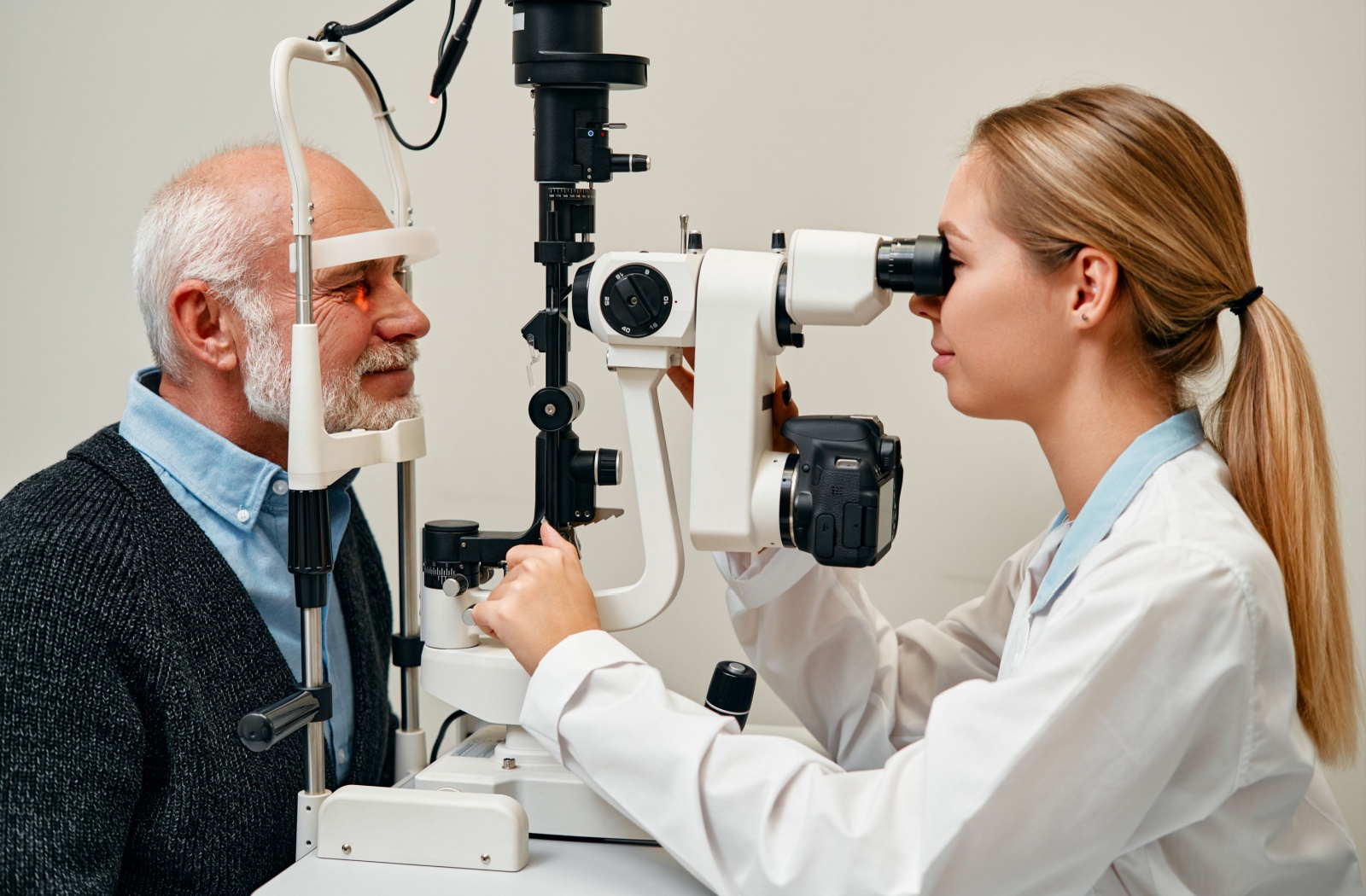Understanding your eye health is crucial, especially regarding conditions that can significantly impact your vision. One such eye disease is macular degeneration, a common yet often misunderstood eye disease. The early warning signs of macular degeneration include blurry vision, dark or empty areas, and difficulty adapting to low-light conditions.
One important aspect of macular degeneration is that it often develops slowly over time and presents with minimal symptoms until there is noticeable—and irreversible—vision loss. This highlights the importance of regular comprehensive eye examinations. Macular degeneration is typically something that your eye doctor screens for, especially in older adults.
Understanding Macular Degeneration
Macular degeneration is a medical condition that affects the central part of the eye, known as the macula. This area is responsible for sharp, central vision, and is essential for activities like reading, driving, and recognizing faces. When the macula deteriorates, you may experience blurred or reduced central vision, making these everyday tasks challenging.
Although people of any age can develop macular degeneration, age is the leading risk factor. That’s why the condition is also referred to as age-related macular degeneration (AMD). The prevalence of AMD increases with age, making it one of the leading causes of vision loss in adults older than 60. While it can be a daunting diagnosis, understanding the early warning signs of AMD and seeking timely medical intervention can make a significant difference in managing the condition effectively.
The Two Types of AMD
There are two types of AMD. Both affect the macula, but they present differently and require different treatment.
Dry AMD
Dry AMD is more common, accounting for around 90% of cases. It occurs when the macula thins over time due to a buildup of protein deposits underneath it, leading to a gradual loss of central vision. This form of AMD often progresses slowly, and early detection can help manage symptoms and slow its progression.
Wet AMD
Wet AMD is less common but more severe. It occurs when abnormal blood vessels grow under the retina and leak fluid or blood, causing rapid and severe vision loss. Early detection and treatment are crucial to preserving vision in cases of wet AMD.
Early Warning Signs of Macular Degeneration
Recognizing the early warning signs of macular degeneration can help you take action before significant vision loss occurs. Here are some key symptoms to watch for:
Blurred Vision
One of the earliest signs is blurred or fuzzy vision, especially when reading or doing activities that require sharp focus. You may notice that straight lines appear wavy or distorted.
Dark or Empty Areas
Another early sign of AMD is the appearance of dark or empty areas in the center of your vision. This can make it difficult to recognize faces or read small print.
Difficulty Adapting to Low Light
People with early macular degeneration often find it challenging to adjust to low-light conditions. You may struggle to see clearly in dimly lit rooms or at night.

The Importance of Early Detection
Early detection of macular degeneration is vital for several reasons:
- It allows for timely medical intervention, which can slow progression of the disease and preserve vision.
- It helps you make lifestyle changes that protect your eyes and overall health.
- Knowing the early warning signs empowers you to seek professional help when needed.
Risk Factors & Who Is Most at Risk
Certain factors can increase your risk of developing macular degeneration. Understanding these risk factors can help you take preventive measures.
Age
Age is the most significant risk factor. Macular degeneration primarily affects individuals over the age of 50, and the risk increases with age.
Family History
A family history of macular degeneration can also increase your risk. If a close relative has the condition, you should be vigilant about regular eye check-ups.
Lifestyle Factors
Smoking, poor diet, and lack of physical activity can contribute to the development and progression of macular degeneration. Maintaining a healthy lifestyle is essential for good overall eye health.
Diagnosis & Treatment Options
If you notice any early warning signs of macular degeneration, it’s crucial to seek professional help. Your eye doctor can perform a comprehensive eye exam to diagnose the condition and recommend appropriate treatment options.
Diagnosis
Diagnosis typically involves a thorough eye exam, including tests like optical coherence tomography (OCT) and fluorescein angiography. These tests help visualize the macula and detect any abnormalities.
Treatment Options
While there’s no cure for macular degeneration, several treatment options can help manage the condition and preserve a person’s vision. These include medications, laser therapy, and lifestyle changes. Your optometrist can work with you to determine the best course of action.
Book an Eye Exam with Your Eye Doctor
Macular degeneration is a serious eye condition that can significantly impact your vision and quality of life. However, by recognizing the early warning signs, understanding the risk factors, and seeking professional help, you can take proactive steps to protect your vision.
At The Eye Gallery, we’re committed to helping you maintain your eye health. Call our team to book an exam if you’ve noticed any changes in your vision or have concerns about macular degeneration, don’t hesitate to reach out to our team of experts. Schedule an appointment today and take the first step towards preserving your sight for years to come.




